'Cave dwellers' guard ancient cliff paintings
What is it like to live in a cave once inhabited by ancient civilizations? Zhang Youbin and his wife have the answer.
Squatting on the ground, using a lighter to ignite a pile of leaves, 44-year-old Zhang is ready to fix lunch in the cave, which is not very big and is located deep in the mountains, about a two-hour drive from Zhenfeng county, Southwest China's Guizhou province.
Zhang is from a village in Zhenfeng. Six years ago, the local government entrusted Zhang and his wife with the care of the ancient Hongyan cliff paintings, which decorate the cave.
The cliff paintings were first noticed in 1991 and have a history of more than 6,000 years, according to Li Wenxin, director of the county's heritage administration.
In 2015, the area was listed as a provincial-level protection site. The paintings cover a cliff area of 110 meters in width and 0.5 to 20 meters in height. Most patterns have become blurred over the years. Those still recognizable show cows, palm prints, pigs and people.
"It is suspected that the paint is cinnabar," Li says, adding that the paintings are specific and have certain artistic and ornamental value.
"In particular the porcine patterns, which were first found in the surrounding areas along the Beipan River, indicating high research value," he adds.
In 2015, the couple settled there to protect the paintings.
The road leading to the site was extremely narrow and dangerous in some sections. Visitors needed to lean tightly into the cliff to pass them. Due to that, Zhang was determined to widen the road. It took him two months to dig using hoes and build the roadbed with stones.
"The road is now much easier for people to walk on," he says.
The couple's principal responsibility is preventing those without authorization from entering the protected area in case the paintings are damaged.
"My wife and I take turns guarding the paintings every day, rain or shine," Zhang says.
To save their commuting time, the couple established a temporary home in a cave near the paintings. They have some daily necessities, including a bottle of insecticide, two pots, a chopping board, a kitchen knife and a simple bed made of thin wooden planks.
"The insecticide is to keep mosquitoes out and snakes," Zhang says.
The couple have placed their cooking oil, salt and rice in a plastic bucket and hung it on the wall of the cave in case rats appear.
They also use a small piece of land in front of the cave to grow chilies. They fetch fresh water from a cave at the bottom of the cliff.
"The cave is cool in summer and warm in winter," Zhang says.
Having spent six years guarding the paintings, Zhang has lost count of how many nights he has spent in the cave. But he is getting familiar with the paintings.
"I can tell you the exact location of each and every painting," he says.
京ICP备13028878号-8







 Overview
Overview Guiyang
Guiyang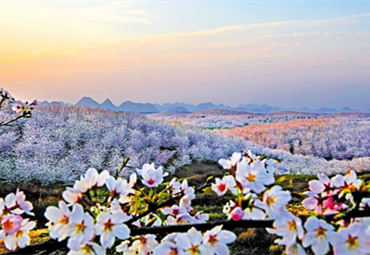 Guian New Area
Guian New Area Liupanshui
Liupanshui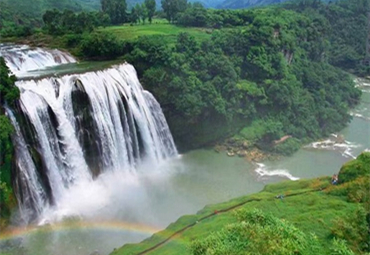 Anshun
Anshun Qianxinan
Qianxinan Qiandongnan
Qiandongnan Qiannan
Qiannan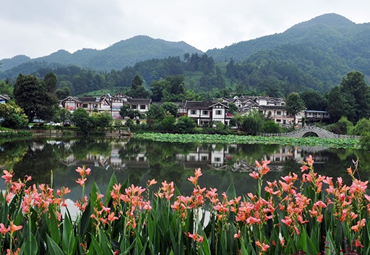 Zunyi
Zunyi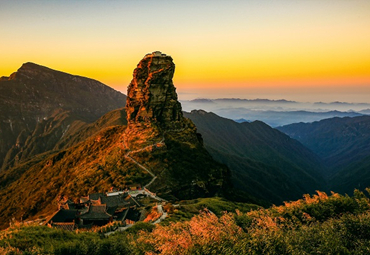 Tongren
Tongren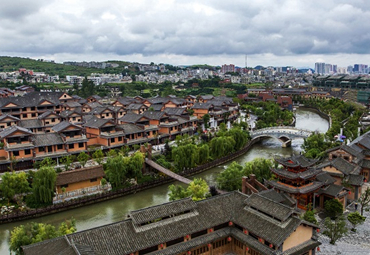 Bijie
Bijie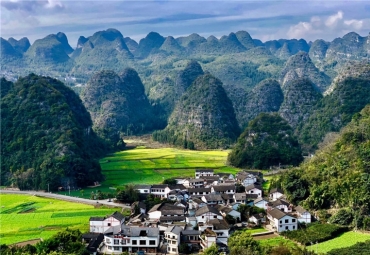 18th Guizhou Tourism Industry Development Conference
18th Guizhou Tourism Industry Development Conference  Guizhou voice at 2024 national two sessions
Guizhou voice at 2024 national two sessions Discover natural beauty in Qiannan, Guizhou
Discover natural beauty in Qiannan, Guizhou 

